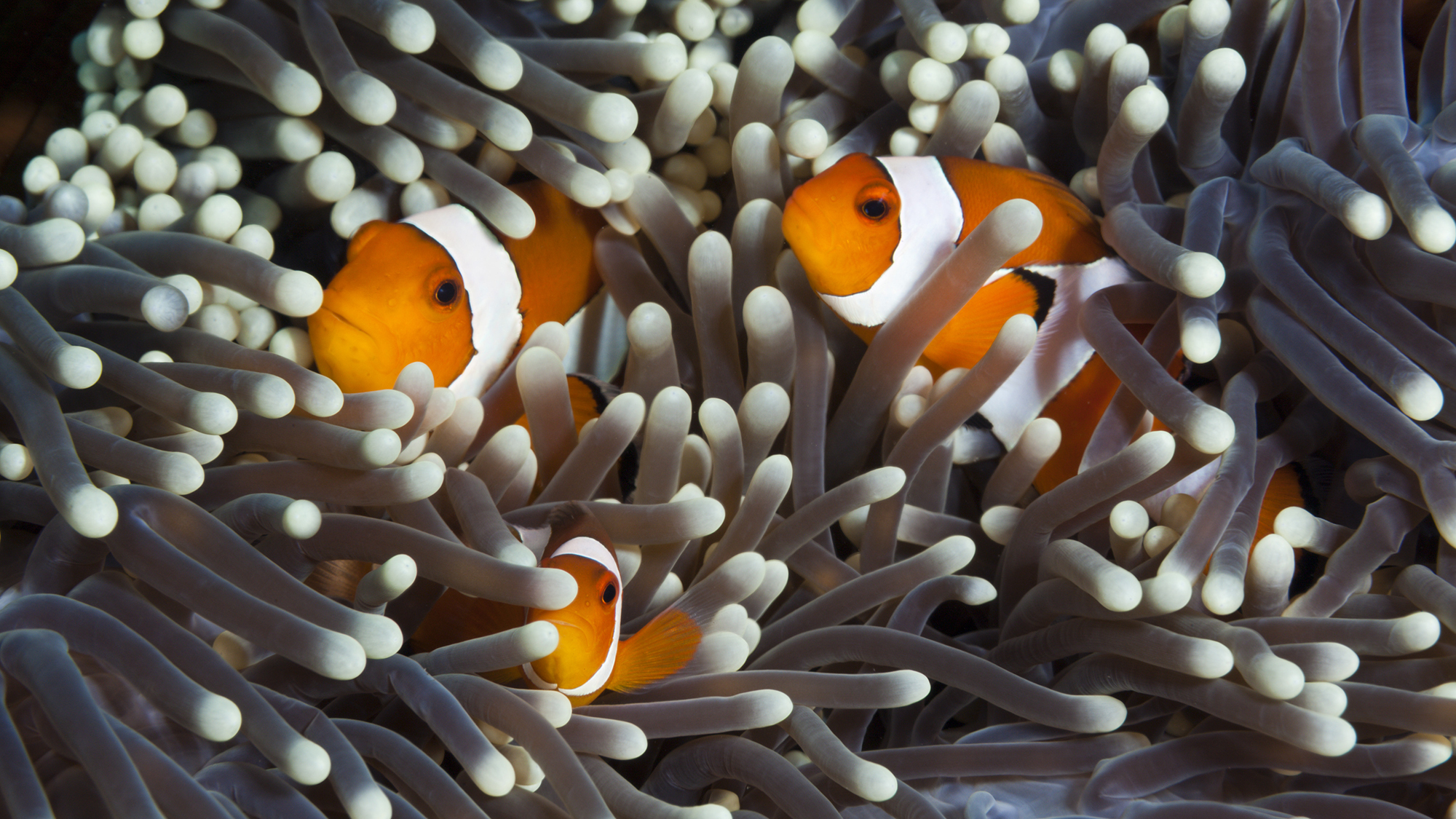

The colorful anemonefish–aka clownfish–that call the carnivorous and stingy anemones on coral reefs home have a happy and carefree reputation among humans. However, their real personalities aren’t always appropriate for a Pixar movie. They will very aggressively bully and defend their space from other anemonefish that they perceive as an enemy and not part of their colony. Some new research suggests that they can recognize fish that they don’t want around them based on the number of white bars on the intruding fish’s body. The findings are detailed in a study published February 1 in the Journal of Experimental Biology.
[Related: Baby anemonefish can rapidly change their genes to survive in the sea.]
There are 28 described species of anemonefish. They live in warmer waters in the Indian and Pacific Ocean. These fish are only about four inches long and have anywhere between zero and three white bars on their bodies. Scientists have observed the clownfish allowing other anemonefish species to visit their home. However, if a member of their own species that is not part of their colony enters their home, the largest fish–or alpha fish–will chase and bite at the intruder.
Counting bars
To determine how these fish can tell who they want in their clique (and who they don’t), a team at the Okinawa Institute of Science and Technology in Japan conducted two experiments with immature lab-raised common clownfish (Amphiprion ocellaris) that had never seen any other species. The team then recorded the fishes’ reactions to intruders of their own species and other anemonefish species–including Clarke’s anemonefish (A. clarkii), orange skunk clownfish (A. sandaracinos), and saddleback clownfish (A. polymnus).
In the first experiment, they placed different species of anemonefish that had different numbers of white bars in small cases inside a tank. They watched for how often and for how long the fish would stare at the case and circle it.
They found that the common clownfish were the hardest on members of their own species with three white bands. They fought 80 percent of the fish for up to three seconds and even maintained an 11 second standoff with one fish.

Intruders from other species had a better time. The orange skunk clownfish has no side bars and a white line along its back and were barely confronted. The two-barred Clarke’s clownfish and three-barred saddleback clownfish were “mildly bullied,” according to the team.
During the second experiment, the researchers showed a colony of clownfish various plastic discs. The discs were painted with anemonefish coloration and measured the level of aggression towards these fish dupes.
Like with the live fish, the plastic models that had two bars were attacked slightly less frequently. Those without any bars saw the least aggressive behavior from the young fish.
According to study co-author and ecologist Kina Hayashi, the results “suggests that they are able to count the number of bars in order to recognize the species of the intruder.”
Earlier studies have shown that clownfish also react much more aggressively towards fish models with vertical rather than horizontal bars. This suggested that the amount of white color or the general presence of white bars was not necessarily a deciding factor in how the fish behave. However, the plastic discs in this new study only have vertical bars and no other physical features that would tell the common clownfish what species they are seeing. The researchers believe that the clownfish may be counting the number of vertical white bars to determine how cordial (or not) they will be towards a fake fish.
A very strict hierarchy
The team also found that a rigid hierarchy within clownfish colonies determines which specific fish attack the intruder. A wild colony is typically made up of one alpha female, one beta male, and several gamma juveniles. Social position is determined by very slight differences in size.
[Related: Flamingoes have big personalities—and their friendships prove it.]
Their sex also plays an interesting role. All clownfish are born male, but some will change into females when they mature. As they reach their adult size and their sex is determined, anemonefish will also gain their third and final stripe. A colony’s current alpha will even chase out colony members if they grow too large as a way to uphold the status quo within the group.

This study used fish that had not matured and were in a lab setting, but the team still observed the same size-based hierarchy. The largest juvenile took on the alpha role and led the charge against the intruder.
“Anemonefish are interesting to study because of their unique, symbiotic relationship with sea anemones,” Hayashi said in a statement. “But what this study shows is that there is much we don’t know about life in the marine ecosystems in general.”
